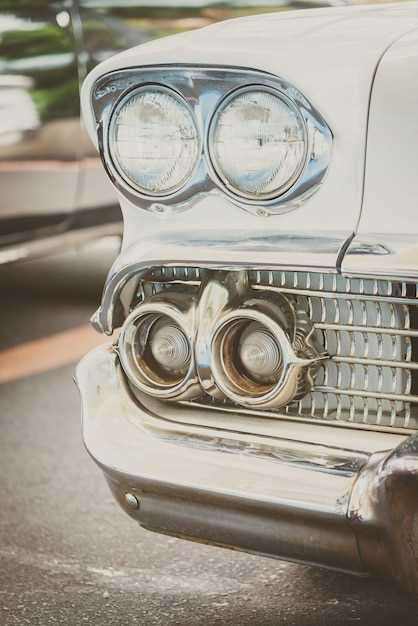
If you’re a car enthusiast or simply someone who appreciates the charm of vintage vehicles, purchasing a 70s American classic car can be an exciting journey. This decade is renowned for its distinctive designs, powerful engines, and the sense of freedom that comes with driving an iconic automobile. However, buying your first classic car requires careful consideration and research to ensure you make a smart investment.
This guide will walk you through the essentials of selecting the perfect vehicle, from understanding the different models available to recognizing what to look for when inspecting a car. You’ll find valuable tips on assessing the condition of a classic car, navigating the purchasing process, and ensuring that your investment stands the test of time. With the right knowledge and preparation, you’ll find that your dream of owning a 70s classic car can become a reality.
Delving into the realm of 70s American classics can be both thrilling and daunting, but this guide aims to simplify the process for you. Get ready to embark on your journey towards owning a piece of automotive history!
Understanding the Key Features of 70s American Classic Cars
When buying a vehicle from the 1970s, it’s essential to recognize the defining characteristics that set these classic cars apart. First and foremost, the 70s marked a shift in automotive design, emphasizing both style and performance. Many models featured bold lines, distinct colors, and an overall aesthetic that screamed individuality.
Engine options during this era varied widely, with many vehicles offering powerful V8 engines. This allowed for a thrilling driving experience, making the cars not only visually appealing but also exciting on the road. Owners often seek vehicles with good performance specifications, including horsepower and torque, which were significant selling points at the time.
Another key feature of 70s American classic cars is their interior comfort. Plush seating, spacious cabins, and innovative dashboard designs provided a sense of luxury that was becoming more popular among consumers. Many models also included advanced technology for the era, such as AM/FM radios and air conditioning, which enhanced the overall driving experience.
Additionally, the safety features of these vehicles reflect the evolving standards of the time. While 70s cars may not include today’s advanced safety systems, they often came equipped with seat belts, stronger body frames, and improved braking systems. Buyers should consider these elements when evaluating the safety of a potential purchase.
Restoration and maintenance are also important aspects to consider. Many classic car enthusiasts appreciate the hands-on approach required to maintain these vehicles. Understanding the availability of parts and the community of vintage car clubs can play a significant role in the ownership experience.
In summary, when considering buying a 70s American classic car, it’s important to focus on design, performance, comfort, safety features, and the potential for restoration. These key attributes contribute to the enduring appeal of these vehicles, making them a worthwhile investment for any classic car enthusiast.
Evaluating Condition and Authenticity Before Purchase

When buying a 70s American classic vehicle, assessing its condition and authenticity is crucial. The charm of these cars often lies in their original components, which can significantly affect both performance and value. Begin your evaluation by thoroughly inspecting the body for rust, dents, and signs of past repairs. Look for any inconsistencies in paintwork, as a respray could indicate hidden damage.
Examine the undercarriage and engine bay as well. You should pay particular attention to oil leaks, corrosion, and overall cleanliness. A well-maintained engine typically indicates that the vehicle has received proper care over the years. Don’t hesitate to ask for service records; documentation can help verify the vehicle’s history and showcase its upkeep.
Authenticity also plays a vital role in the value of a 70s classic car. Investigate the vehicle identification number (VIN) to ensure it corresponds with the manufacturer’s specifications. Check for original parts, such as the engine and transmission, as well as the interior equipment. Replacement of key components can lead to a decrease in value, so it’s essential to verify their originality.
If possible, have a trusted mechanic who specializes in classic cars perform a thorough inspection. They can provide valuable insights and identify any potential issues you might overlook. Ultimately, ensuring the vehicle’s authenticity and condition will lead to a more rewarding ownership experience and potentially greater value retention over time.
Navigating Financing and Insurance Options for Your Classic Car

When buying your first 70s American classic car, understanding financing options is crucial. Traditional auto loans may not suit classic cars, as their value can be subjective. Seek lenders who specialize in classic car loans, which typically involve lower down payments and longer repayment terms. Research local banks, credit unions, and specialty lenders to find the best rate and terms that fit your budget. Ensure you know the total loan amount, interest rates, and any applicable fees before making a decision.
Another option is to explore personal loans. These loans do not require collateral, making them a choice for buyers looking to keep their classic car purchase separate from other assets. However, personal loans often come with higher interest rates than secured loans, so weigh the benefits against the costs carefully.
Besides financing, securing the right insurance for your classic car is equally important. Standard auto insurance often does not provide adequate coverage for classic vehicles, leaving collectors vulnerable during accidents or theft. Opt for specialized classic car insurance, which is designed to protect vintage vehicles. This type of insurance typically includes agreed value coverage, which ensures you receive the full value of your car should a total loss occur.
When choosing a classic car insurance provider, compare policies based on coverage limits, premium rates, and restrictions on mileage and storage conditions. Some insurers offer discounts for club memberships or restoring the vehicle, so don’t forget to inquire about potential savings.
In summary, navigating financing and insurance options for your classic 70s car involves thorough research and preparation. Ensure you understand all terms and conditions, so you can enjoy your classic vehicle worry-free.










